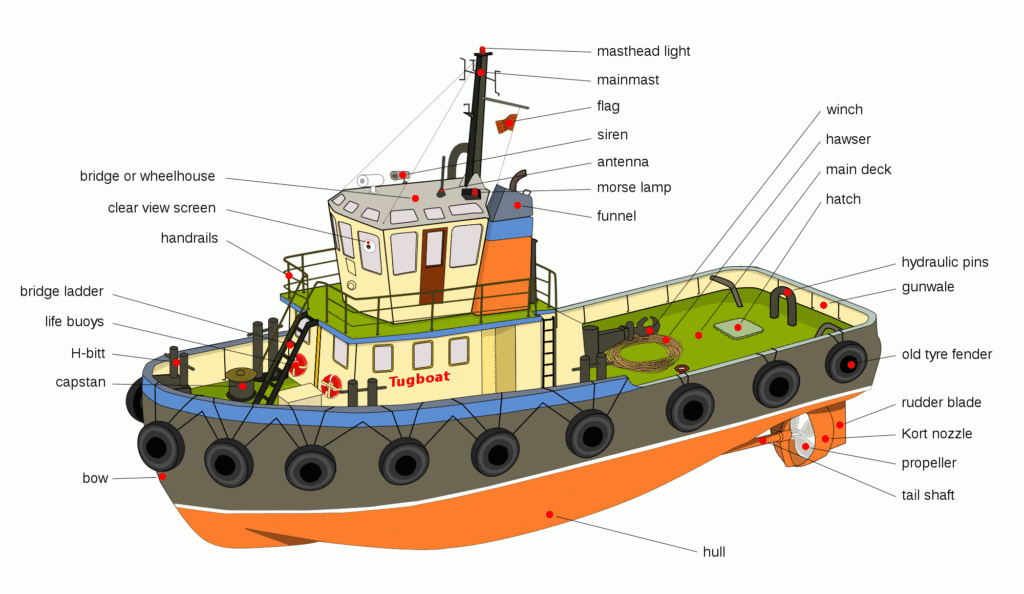
Do you have an interest in ships? If yes, have you ever wondered what ships are built of and what their primary components are? A ship is comprised of steel and composite materials. The parts of a ship can be divided either as visible or invisible structural parts.
The most visible sections of a ship are the rudder, anchor, bow, keel, accommodation, propeller, mast, bridge, hatch covers, and bow thrusters, and there are numerous other parts that are also visible. On the other hand, the ship’s invisible structural components include bulkheads, frames, cargo holds, hopper tank, double bottom, girders, cofferdams, side shells, etc.
Here are the major parts of a ship!
1. Bow
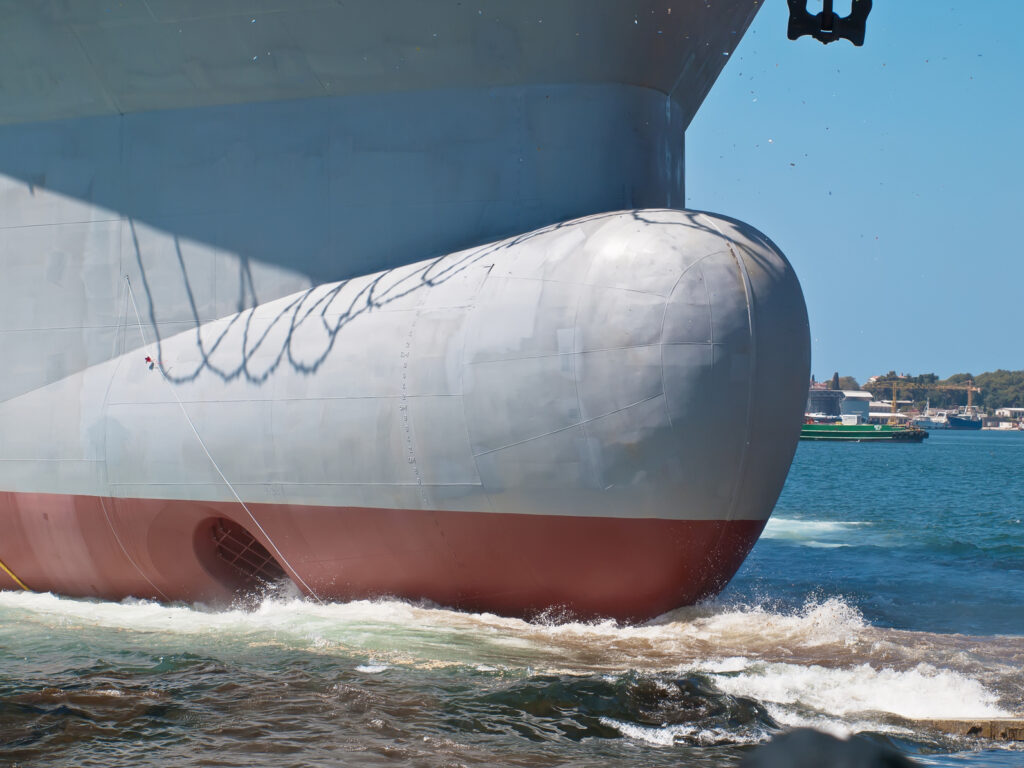
A ship’s bow is the frontmost section that cuts through the water as the ship moves forward. The two most important requirements for a bow are a minimal drag or resistance between the water and the ship’s hull and sufficient height to prevent water from splashing too easily on top of it.
Bows play an important role in making the ship’s propulsion more manageable.
There are three primary types of ship bows:
Bulbous bow
This is a typical type of bow used on most ships, especially those that are utilized for transporting goods. It is easy to recognize thanks to the distinctive bulbous projection that it has just below the surface of the water.
Axe bow
This particular style of ship bow is characterized by a hull structure that has a vertical stem line and a deep, axe-like construction in the frontmost portion of the vessel. Because of the way it is constructed, the axe bow contributes to an increase in the ship’s speed while maintaining the same amount of power.
Inverted bow
The inverted bow design features a part of the bow and hull that has been turned upside down, analogous to the way that a submarine with an extended waterline is constructed
2. Anchor
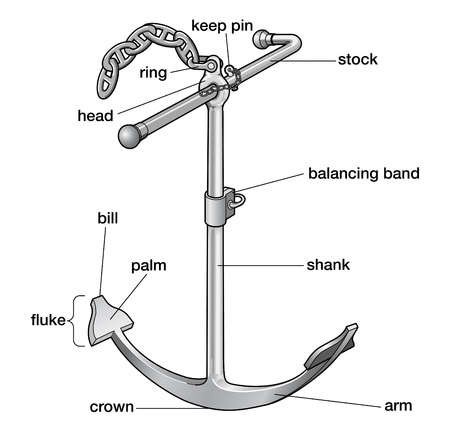
An anchor is a hefty piece of metal that is attached to chain cables and is stowed or fastened in the hose pipe throughout the journey or ship operation. With the extra subclass of sea anchors, it might be permanent or temporary.
An anchor is made up of three essential components including:
- A shank. A shank is the structure of the stem that is secured and attached to the flute by a tripping pin passing through the shank hole. These connecting frameworks and stacks constitute the anchor crowns together.
- A Stack. A stack is a crossbar that assists in rotating the anchor in order to enable the fluke to penetrate the ground.
- A Fluke. Fluke is the portion of the anchor that dips deeply into the water to keep the ship afloat.
Anchors serve the function of holding hands, locking ships to a specific location by hooking their flutes deep into the seabed. The weight of the chain and the force that results from this combination are what keep the ship anchored in its position.
3. Accommodation
The living quarters for the crew and the people on board are located in the accommodation area. Offices, a fitness center, crew quarters, a hospital, a salon, an entertainment area, common rooms, a laundry room, and a kitchen are all included in its amenity package.
It is an essential component of the ship and is made up of the domestic refrigeration system, the sewage treatment plant, the freshwater system, and the waste disposal system. Additionally, it is responsible for air conditioning in the accommodation block.
It is an essential component of a ship and provides a place for passengers to relax, as well as a medical facility and food courts.
4. Deck
A deck is the covering of a vessel’s hull structure. A ship can have different decks at different sections or components of the ship, such as an upper and lower deck or decks 1, 2, and 3 in descending order. What this means is that the weather-exposed uppermost deck is referred to as the main deck or weather deck.
The main deck, poop deck, upper deck, lower deck, weather deck, and Foredeck are the six primary varieties of a ship’s deck, based on their position and height. The main deck that runs the entire length of a ship is known as the main deck.
A ship’s deck is the horizontal plane that supports the hull structure and provides a variety of ceiling and floor options. The second function it serves is to offer a place to stand and work, as well as a working surface, while shielding workers and equipment from the elements of the environment.
5. Hull
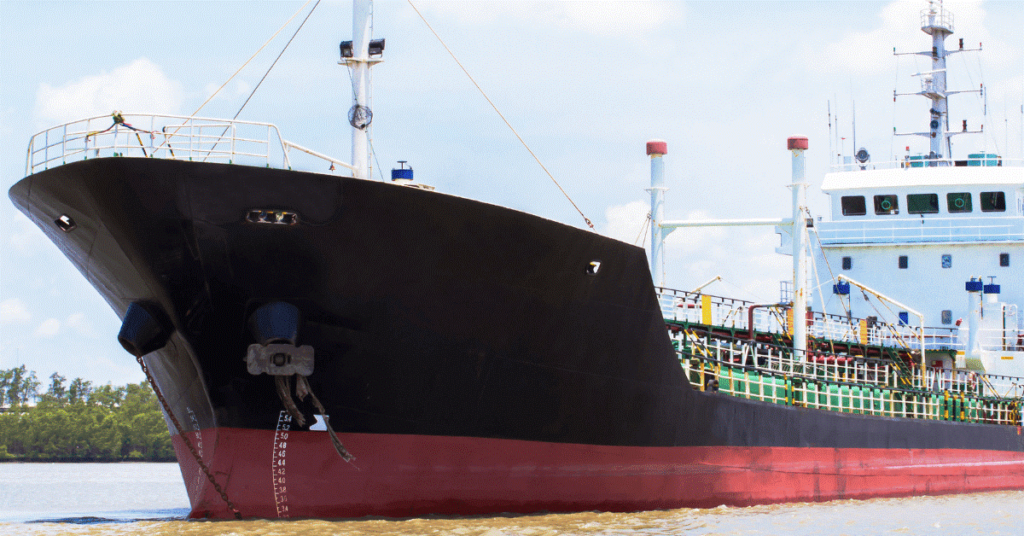
The section of a ship that extends below the waterline and serves to cover and defend the vessel from water intrusion is called the hull. You might think of it as the covering that shields the valuables contained within from the elements of the outer world.
Ship Hulls are composed of a series of interconnected plates called stakes, as well as other structural members, including plating and stiffeners.
The structural components of a stiffener include longitudinal and transverse frames, bulkhead stiffness, girders, and beams. While ship plating mostly consists of deck plating, it also includes a bottom, bulkhead, and side plating.
The design of a ship’s hull is such that it offers little water resistance, is possible and cost-effective to build, and does not compromise cargo room. By calculating and minimizing the hull’s resistance to ship’s motion, it is simple to enhance the overall efficiency of a ship.
6. Keel

The keel of a ship can be compared to the spinal cord of a person. The keel of a ship is a flat, blade-like structure that supports the weight of the watercraft in the same way as the spine of a human maintains the backbone erect by linking and supporting the body. Because it is the primary longitudinal component of the ship, all of the ship’s other significant structural components are connected to it. In other words, the ship cannot function without it.
The keel of a ship is located at the bottom of the ship’s hull’s centerline. Do you know that the keel is frequently the first component of a ship’s hull to be built? However, large modern ships are frequently constructed from a number of prefabricated, complete hull sections as opposed to a single keel. The shipbuilding process will then commence with the cutting of the first steel sheet. The keel also aids in maintaining the upright position of a boat, preventing the wind from causing it to list to one side.
7. Bridge
If the engine room is the ship’s heart, then the bridge is its ‘brains.’ It is a large platform atop the living quarters from which the ship is commanded. They are frequently aided by an additional short passage called a bridge wing, which provides a broader and better perspective of the outside environment for ship maneuvering.
The pilot house is the primary section of the bridge from which the ship is commanded and navigated. According to maritime norms and regulations, it must allow a clear vision from 1200 port to 1200 starboard when viewed from the conning position.
The most typical primary purposes of a bridge include the following:
- Regulating course and speed (navigation)
- Monitoring weather and sea conditions
- Facilitating inner and outside communication
8. Rudder
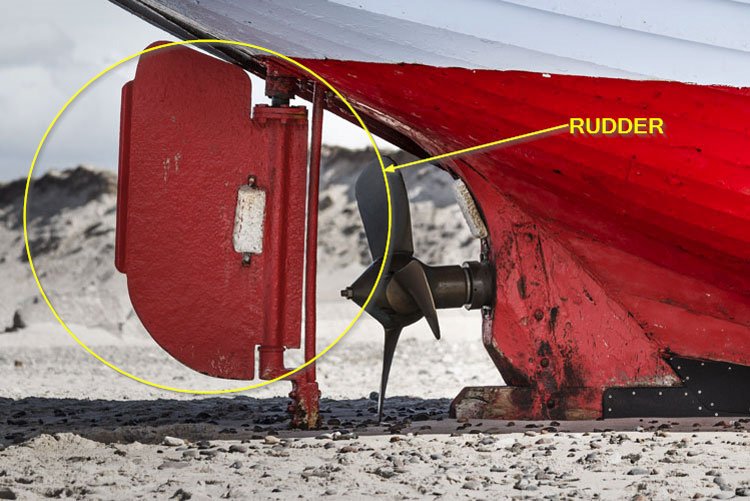
A car’s steering wheel is analogous to a ship’s rudder. The rudder enables the ship to turn in the desired direction. Rudders are put near the ship’s stern to improve its hydrodynamic performance. Rudders and propellers work hand in hand, like Batman and Robin. The propellers generate a force that propels the ship forward whilst the rudder controls its course.
It comprises of the following components: the rudder trunk, a movable flap, the main rudder blade, a hinge system, links, and a rudder carrier bearing. There are three distinct types of rudders: balanced, semi-balanced, and unbalanced. As an essential component of the ship, the rudder is equipped with a steering gear system that governs its movement. It functions based on Newton’s third law of motion.
There are different types which include:
i) Balanced Rudder
A balanced rudder is essentially a rudder plate that is attached to the rudder stock just at its top. In other words, the rudder stock does not descend along the rudder’s span. The position of the rudder stock along the chord of the rudder (from forward to aft end of the rudder) determines whether a rudder is balanced or semi-balanced. In balanced rudders, in which spade rudders are typical, the rudder stock is positioned so that 40% of the rudder’s surface is in front of the stock and the remaining 60% is behind it.
ii) Unbalanced Rudder
These rudders’ stocks are fastened at the most forward point of their span. In contrast to balanced rudders, the rudder stock runs along the chord length. The explanation is straightforward. In this instance, the torque required to turn the rudder is far greater than what would be required for a balanced rudder. Therefore, the uppermost portion of the rudder must be secured to the spindle to prevent it from deviating from its natural position. However, unbalanced rudders are no longer often used.
9. Propeller
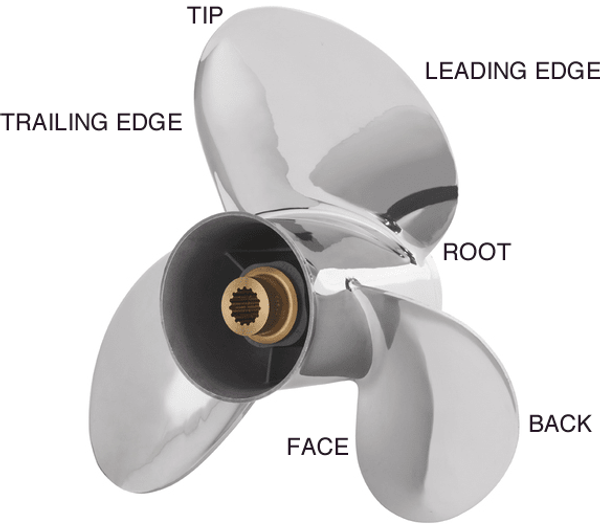
The propeller of a ship is a rotating, fan-like device that is powered by the ship’s primary engine. When the propeller begins to spin in the water, its blades convert the rotational energy into thrust. Without propellers, the ship cannot move forward or backward; propellers are the ship’s “wheels.”
10. Side Thrusters
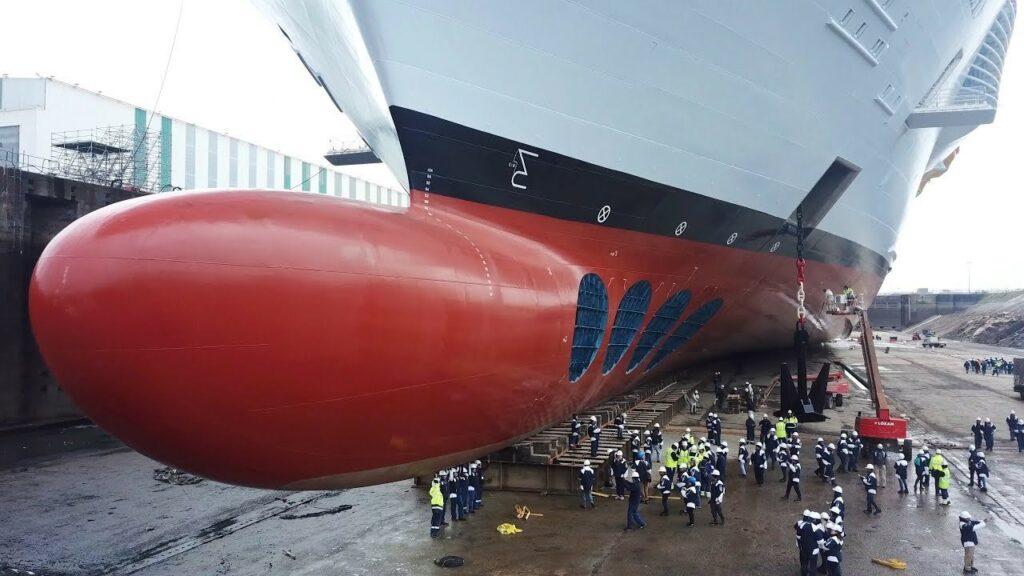
A thruster is a propulsion device installed in a ship’s bow or stern to increase its maneuverability. When thrusters are triggered, their sideways-pointing propellers push the bow or rear of a boat sideways through the water.
When only one thruster, such as the one in the bow, is engaged, the boat will also turn and change orientation. Using both the bow and stern thrusters simultaneously, a boat can be pushed laterally. The thruster in the front of the ship is known as the bow thruster, whilst the thruster at the rear is known as the stern thruster. In busy water near ports or canals, thrusters aid ship maneuverability.
11. Stern
The stern is the ship’s rear end. The stern is the boat’s opposite end from the bow or front. The stern is constructed over the ship’s transom, or rear end, which is supported by the sternpost. A stern ensures a consistent flow of water into the ship’s propellers.
In the stern of many ships lies the engine room. Smaller vessels may have propulsion systems in the stern; for instance, motorboats commonly have outboard engines that extend into the water from this location. Some boats include a rudder that extends into the water at the rear of the vessel to aid with steering.
Depending on the type of vessel, the ship’s stern can serve a variety of purposes. For instance, a dining area towards the stern of a cruise ship may offer a clear view of the ocean. On older sailing ships, the captain’s quarters were situated in the ship’s stern. The vessel’s name is painted on the stern of yachts and other modern vessels.
12. Engine Room
The engine room is the ship’s powerhouse, and it is positioned on the lowest deck, aft. It contains essential machinery such as the main engine, the auxiliary engine (Alternator), the shafting, the boiler, the freshwater generator, the air compressor, the calorifier, the purifier, the incinerator, the pumps, the heat exchangers, the workshop machinery, among others.
The primary function of the engine room is to house the essential machinery and auxiliary equipment required for various shipboard activities. On the first deck, there are typically control panels for diesel generators and pumps, a workshop, a storage area, settling tanks, service tanks, freshwater expansion tanks, an Inert gas platform, a deck air compressor, air bottles, etc.
On the second deck, there are fuel oil heaters, purifiers, boilers, the main air compressor, diesel generators, and a freshwater generator, among other things. Deck 3 consists primarily of the ship’s main engine, several supporting coolers, oily water separators, etc.
13. Funnel
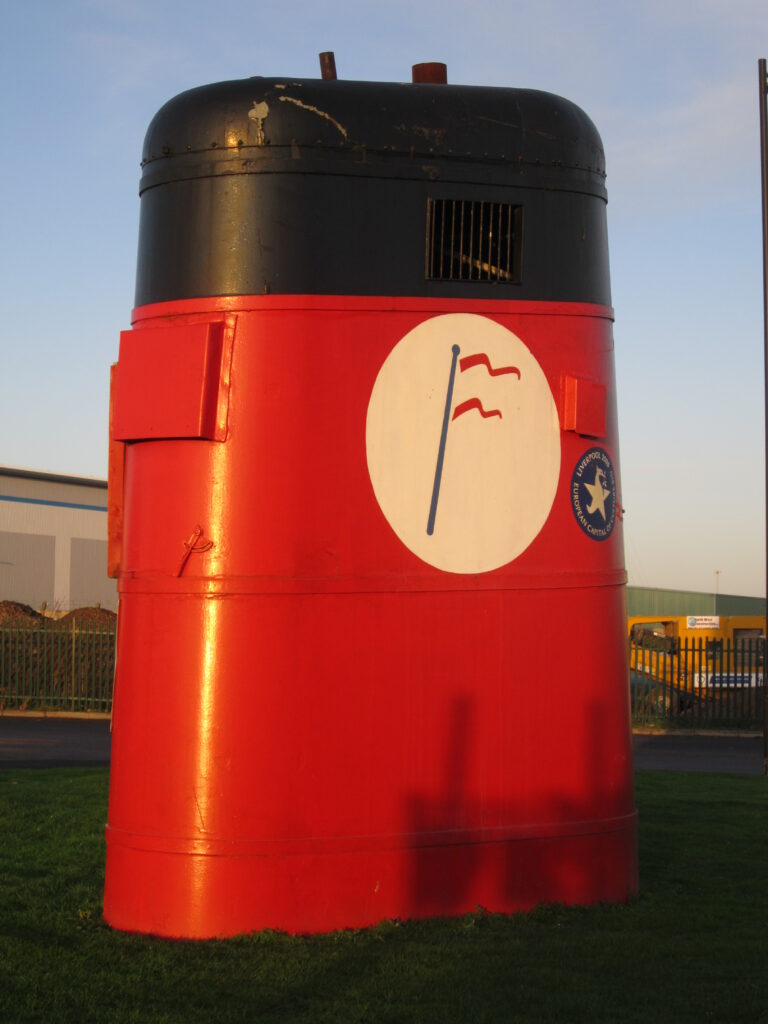
The exhaust gases are discharged into the atmosphere via a funnel. You can think of it as the ship’s chimney. It has been a vital feature of the ship’s structure since the introduction of mechanized ships.
As one of the ship’s components, the funnel’s purpose is to expel engine room exhaust gas into the atmosphere safely. With the ship’s forward speed and the funnel’s tilt towards the stern, exhaust gas is readily pushed away from the ship, preventing any possible navigational obstructions.
14. Free Boards
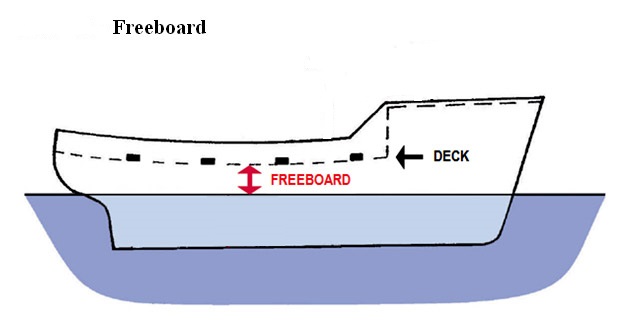
Freeboard is the portion of a ship’s hull that is placed above the waterline. It is the distance between the ship’s upper deck and the waterline. The freeboard of a ship is variable and dependent on the amount of cargo carried.
Maintaining ship stability and preventing sinking is the purpose of the freeboard between the ship’s sections. Under ICLL 1996 (International convention on load line), the load line markings Tropical Freshwater, Freshwater, Tropical, Summer, Winter, and Winter North Atlantic are applied to ship hulls. These load lines ensure that the ship always has sufficient freeboard for safe navigation.
15. Emergency Generator Room
When the primary power source fails, a tiny, separate generator feeds emergency loads with electricity. This is a generator for emergency situations.
It is placed above the uppermost deck, away from primary and secondary equipment and the crash bulkhead, and is surrounded by its own switchboard. This generator should be simple to use and capable of being started at 0°C.
16. Bow Thrusters
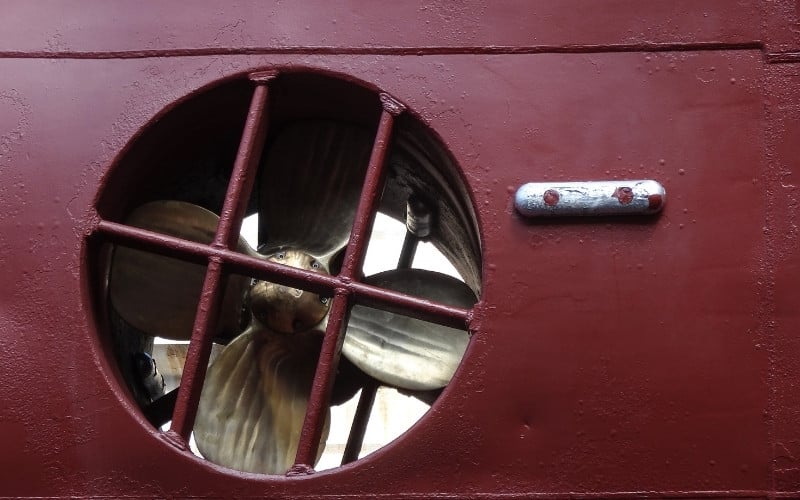
A bow thruster is a propeller-like device installed on both sides of the bow of a ship. It is used to improve a ship’s agility in congested waters at low speeds, such as in canals or near ports.
A ship is managed using propulsion and variable rudder angle. A rudder is a blade-like structure located aft of the propeller that steers a ship horizontally across the water. Changes in rudder angle result in the desired change in ship direction. But what if the ship’s speed is too sluggish for the rudder angle to control properly? This is where bow thrusters came into play, supporting the commander in maneuvering the ship even at low speeds.
17. Hatch Covers
On ships, hatch covers seal off hatch apertures. This aids in keeping water out of the hatch. The water tightness and resistance to the force of a sea hammer of hatch covers. If necessary, they can also accommodate a substantial amount of deck weight. Because lighter ships and boats typically have sufficient splash water and precipitation, lighter hatch designs are utilized for inland navigation vessels.
18. Mast
A mast is a vertical ship structure positioned atop the bridge and forwards of the forecastle in the direction of the ship’s bow. It serves as a platform for the ship’s derrick and holds essential equipment like radars, navigation lights, and the ship’s horn in the event of a foremast. They are constructed of high-tensile steel with extra rigidity based on the size of the derricks they support. Additionally, a ship’s main mast is utilized to hoist the flag.
Compared to the other components of the ship, the primary function of the mast is to store essential equipment such as the radar receiver, navigation lights, ships horn, flags, and in certain cases derricks.
19. Forecastle

A forecastle is the most forward portion of a ship. It comprises the front portion of the upper deck and does not exceed 7 percent of the total deck length. It is immediately identifiable on a ship’s structure by an abrupt rise in the foredeck near the bow.
As one of the most important structural components of a ship, the forecastle or leading edge of the foredeck holds all the equipment required for anchoring operations. In addition to carrying anchoring gear and equipment, a forecastle on naval vessels also carries vital defense cannons.
20. Deck Crane
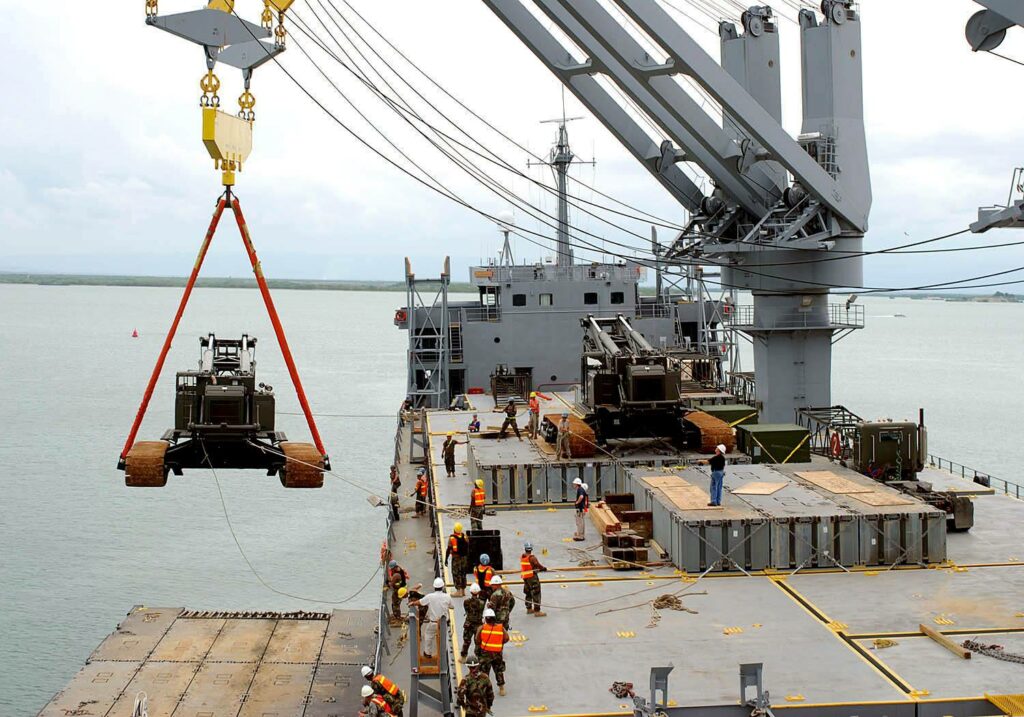
While not all ships have these, the majority do to aid with cargo operation and repositioning of cargo as necessary. In addition, they are utilized to load and unload pipes, equipment, and machinery from ships.
They are installed on the deck, are powered by an electric motor (sometimes hydraulically), and can raise up to 50 tons. On cargo ships, in general, these cranes are evidently one of the most essential components.
21. Bulk Heads
Bulkheads are dividing walls or barriers within the ship’s enclosed hull. The bulkhead contributes to the ship’s skeletal stiffness. It also functions as a space divider. Additionally, it decreases the quantity of seawater leakage or seepage in the event of damage. The bulkhead may be either flat or wavy.
22. Cargo Hold
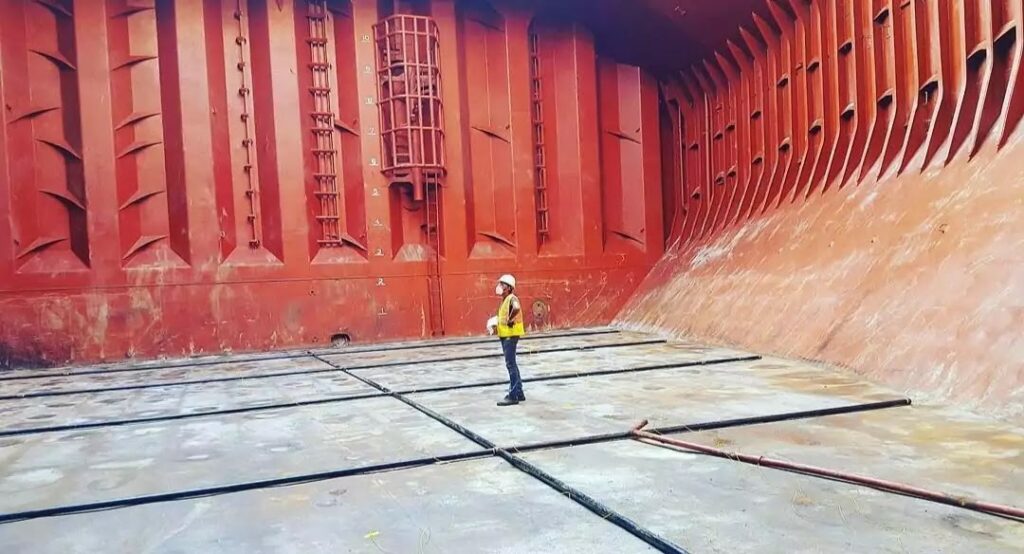
The cargo hold of the ship is a location for transporting cargo. Freight containers are stored within an enclosed compartment on cargo ships. It is often positioned beneath the ship’s deck. A cargo hold ensures the safety of the cargo until it reaches its final destination. A 700-foot cargo ship, for example, can carry approximately 1,000 40-foot containers, which is equivalent to more than 20,000 tons of merchandise.
23. Ballast Tank
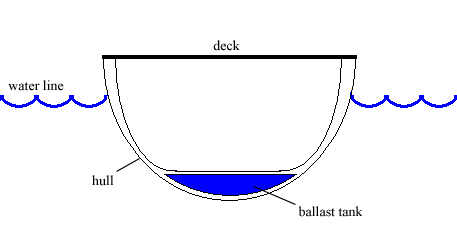
A ballast tank is a structure that is added to aquatic equipment during its construction in order to provide an adjustable point of balance. In shipbuilding, a ballast tank that can be filled with water to add or remove weight is typical.
Ballast tanks are often the greatest area of structural steel on a vessel, and the water contained within one can be extremely corrosive if not monitored. For this reason, the majority of ships have a specific coating on their tanks to prevent damage.
Cleaning ballast tanks are typically complex and time-consuming. When sailors take time off to clean the ship, they have less time to be productive at sea. However, coating the ballast makes it smoother and easier to clean.
24. Double Bottom
A ship’s twin bottom extends from the forepeak to the after-peak tank. It considerably enhances the vessel’s safety in case of catastrophic bottom damage caused by grounding, which could lead to engine room flooding. The double bottom, which is divided into multiple tanks, is ideal for transporting ballast water, fuel oil, potable water, and other liquids.
The first outer layer of a double bottom is the typical ship’s structure, while the second inner layer functions as a second water barrier. Between these two layers is a hollow area that is typically utilized to store water ballast.
25. Paint Room
The paint room is where the ship stores its paint, thinners, and other painting supplies. This room is equipped with explosion-proof lights and is resistant to chemical gas vapors. The majority of ships are repainted every five years or so. The paint room is illuminated with sufficient light intensity and accurate color rendering to prevent the selection of inappropriate paint colors.
Conclusion
The ship, which is an essential source of trade on waterways, can be of various shapes and sizes. Some sections are deemed fundamental, as they are shared by all ships, but others are merely extras that provide elegant or enhanced shipping. All ship components should be inspected for proper operation, and precautions should be taken with potentially hazardous equipment.
The hull (the primary body of the vessel), the navigation bridge (which aids in directing the ship in the correct direction), and the engine room are three essential ship components (propel the ship or help in moving). However, modern ships are now outfitted with the most advanced techniques and technologies in order to facilitate sea travel.
No comments:
Post a Comment